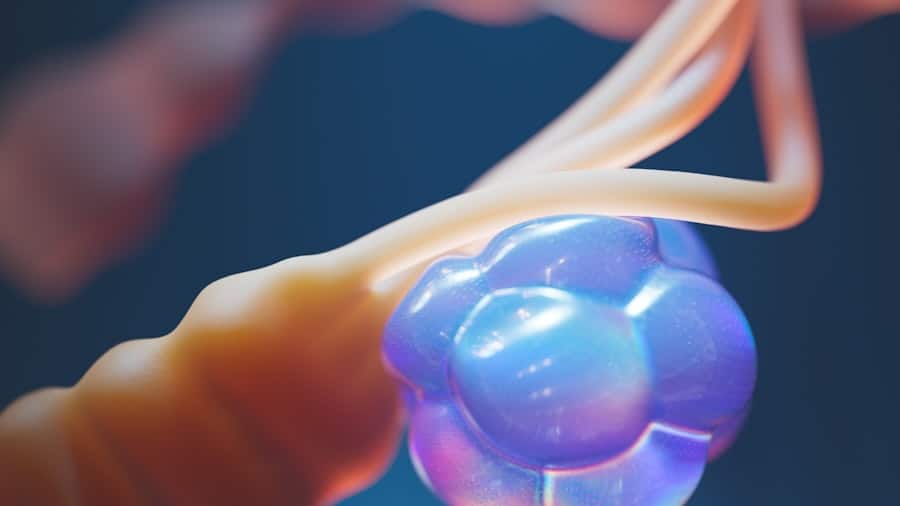Artificial Intelligence (AI) has transformed problem-solving and decision-making across numerous domains. Neural networks, computational models inspired by the human brain’s structure and function, are a fundamental component of AI. Hopfield networks, a specific type of recurrent neural network named after John Hopfield, have garnered considerable interest due to their distinctive properties and AI applications.
These networks excel in pattern recognition, optimization, and associative memory tasks, characterized by their capacity to store and retrieve patterns. This versatility makes Hopfield networks applicable to a wide range of AI scenarios. This article will examine the structure and function of Hopfield networks, their training and learning mechanisms, AI applications, advantages and limitations, and future developments and research in this field.
Key Takeaways
- Hopfield Networks are a type of artificial neural network used in AI for pattern recognition and optimization problems.
- The structure of a Hopfield Network consists of interconnected neurons with feedback loops, and the function involves energy minimization to reach stable states.
- Training and learning in Hopfield Networks involve updating the weights of connections between neurons based on the input patterns and desired outputs.
- Hopfield Networks have applications in image recognition, optimization, and associative memory tasks in AI.
- Advantages of Hopfield Networks include their ability to store and retrieve patterns, while limitations include their susceptibility to spurious states and capacity constraints.
Understanding the Structure and Function of Hopfield Networks
Activation and Associative Memory
The activation of neurons in a Hopfield network is determined by the input patterns and the weights of the connections between neurons. When presented with an input pattern, the network undergoes a series of iterations to converge to a stable state, which represents the stored pattern that is most similar to the input. This process is known as associative memory, where the network retrieves a stored pattern based on the similarity to the input pattern.
Energy Minimization and Optimization
Hopfield networks have the property of energy minimization, where the network seeks to minimize its energy function by adjusting the states of neurons until it reaches a stable state. This property makes Hopfield networks suitable for optimization tasks, such as solving constraint satisfaction problems and combinatorial optimization. Hopfield networks exhibit attractor dynamics, where the network converges to stable states, or attractor states, that represent stored patterns.
Pattern Recognition and Content-Addressable Memory
These attractor states are robust against noise and distortion in the input patterns, allowing the network to retrieve the closest stored pattern even if the input is corrupted. The stability of attractor states in Hopfield networks is a result of the symmetric connectivity and the energy function of the network, which ensures that the network converges to a stable state with minimal energy. This property makes Hopfield networks suitable for pattern recognition tasks, where the network can recognize and retrieve stored patterns from noisy or incomplete inputs. Furthermore, Hopfield networks have been used for content-addressable memory, where the network can recall a stored pattern based on partial or degraded inputs, demonstrating their ability to perform associative memory tasks.
Training and Learning in Hopfield Networks for AI

The training and learning process in Hopfield networks involves storing patterns in the network’s weights to enable associative memory and pattern recognition. The training phase consists of presenting a set of patterns to the network and adjusting the weights based on Hebbian learning, a biological learning rule that strengthens connections between neurons that are simultaneously active. During training, the weights of the connections are adjusted to minimize the energy function of the network and store the input patterns as stable attractor states.
The learning rule in Hopfield networks is unsupervised, meaning it does not require explicit labels or targets for training. Instead, the network learns to associate patterns based on their similarities and differences, allowing it to retrieve stored patterns based on partial or noisy inputs. The learning process in Hopfield networks is characterized by its ability to generalize from training patterns and retrieve similar patterns from new inputs.
This property enables the network to recognize and recall patterns that are similar to those seen during training, making it suitable for pattern completion and recognition tasks. Additionally, Hopfield networks have been extended to incorporate learning mechanisms that enable them to learn new patterns while preserving previously stored patterns. This plasticity allows the network to adapt to new information and update its weights without forgetting previously learned patterns, making it suitable for dynamic environments where new data is continuously encountered.
Applications of Hopfield Networks in AI
| Application | Description |
|---|---|
| Pattern Recognition | Hopfield networks can be used to recognize and recall patterns from noisy or incomplete input data. |
| Optimization | They can be applied to solve optimization problems such as the traveling salesman problem or the job scheduling problem. |
| Content Addressable Memory | Hopfield networks can be used to store and retrieve patterns from memory based on content rather than specific memory addresses. |
| Neural Associative Memory | They can be used to store and retrieve associated patterns, making them useful for tasks such as auto-associative memory and hetero-associative memory. |
Hopfield networks have found numerous applications in AI due to their ability to perform associative memory, pattern recognition, and optimization tasks. One of the key applications of Hopfield networks is in content-addressable memory, where the network can retrieve stored patterns based on partial or degraded inputs. This property makes them suitable for tasks such as image and pattern recognition, where the network can recognize and recall patterns from noisy or incomplete inputs.
Additionally, Hopfield networks have been used for optimization tasks, such as solving constraint satisfaction problems and combinatorial optimization. The energy minimization property of Hopfield networks allows them to find optimal solutions to complex problems by converging to stable states that minimize the energy function. Another application of Hopfield networks is in associative memory tasks, where the network can retrieve stored patterns based on their similarities to input patterns.
This property makes them suitable for tasks such as auto-association and hetero-association, where the network can recall previously seen patterns or associate different patterns based on their similarities. Furthermore, Hopfield networks have been used in fault-tolerant systems, where they can recover from errors and noise in inputs by retrieving the closest stored pattern. This property makes them suitable for applications in robotics, control systems, and fault-tolerant computing, where robustness against noise and errors is essential.
Advantages and Limitations of Hopfield Networks in AI
Hopfield networks offer several advantages in AI due to their properties such as associative memory, energy minimization, and robustness against noise. One of the key advantages of Hopfield networks is their ability to perform content-addressable memory, where they can retrieve stored patterns based on partial or degraded inputs. This property makes them suitable for applications such as pattern recognition, image processing, and fault-tolerant systems, where robustness against noise and errors is essential.
Additionally, Hopfield networks have been used for optimization tasks, such as solving constraint satisfaction problems and combinatorial optimization, due to their energy minimization property. However, Hopfield networks also have limitations that need to be considered in their applications. One of the limitations is their capacity for storing patterns, as the number of patterns that can be reliably stored in a Hopfield network is limited by its size and connectivity.
As more patterns are stored in the network, there is a higher likelihood of spurious attractor states emerging, which can lead to retrieval errors and interference between stored patterns. Additionally, Hopfield networks are sensitive to noise and distortion in inputs, which can affect their ability to retrieve accurate patterns from noisy inputs. Furthermore, training Hopfield networks with large datasets can be computationally expensive due to the need for adjusting weights based on all pairs of input patterns during training.
Future Developments and Research in Hopfield Networks for AI

Enhancing Pattern Storage Capacity
One area of research is focused on enhancing the capacity of Hopfield networks for storing patterns by incorporating sparsity constraints and regularization techniques. By imposing constraints on the connectivity or activity of neurons in the network, researchers aim to increase the number of reliable patterns that can be stored while reducing interference between stored patterns.
Efficient Training and Scalability
Research is also focused on developing efficient training algorithms for large-scale Hopfield networks by leveraging parallel computing and distributed learning techniques.
Extending Capabilities and Hybrid Systems
Another area of research is focused on extending the capabilities of Hopfield networks for handling continuous-valued data and complex decision-making tasks. By incorporating continuous activation functions and adapting the energy function of Hopfield networks, researchers aim to enable them to handle continuous data such as sensor measurements and real-valued inputs. Furthermore, research is focused on integrating Hopfield networks with other types of neural networks and machine learning models to create hybrid systems that leverage the strengths of different architectures for complex AI tasks.
Harnessing the Potential of Hopfield Networks in AI
In conclusion, Hopfield networks offer unique properties that make them suitable for a wide range of applications in AI, including associative memory, pattern recognition, optimization, and fault-tolerant systems. Their ability to perform content-addressable memory and energy minimization tasks has made them valuable tools for solving complex problems in various domains. While they have limitations such as capacity constraints and sensitivity to noise, ongoing research is focused on addressing these challenges and expanding their capabilities for handling continuous-valued data and large-scale learning tasks.
As AI continues to advance, Hopfield networks are poised to play a significant role in enabling intelligent systems to perform robust pattern recognition and decision-making tasks in dynamic environments. By harnessing the potential of Hopfield networks through ongoing research and development, we can further unlock their capabilities for addressing complex AI challenges and driving innovation in diverse fields.
If you’re interested in learning more about the historical evolution of the metaverse, you should check out this article on the topic. It provides a comprehensive overview of how the concept of the metaverse has developed over time and its potential impact on society.
FAQs
What is Hopfield?
Hopfield refers to a type of recurrent artificial neural network, named after its creator John Hopfield. It is used for pattern recognition and optimization problems.
How does a Hopfield network work?
A Hopfield network consists of interconnected neurons that store patterns as stable states. When presented with a partial or noisy input, the network iteratively updates its neurons until it converges to the closest stored pattern.
What are the applications of Hopfield networks?
Hopfield networks have been used in various applications such as image recognition, optimization problems, associative memory, and combinatorial optimization.
What are the limitations of Hopfield networks?
Hopfield networks have limitations such as limited storage capacity, susceptibility to spurious states, and slow convergence for large networks.
How are Hopfield networks trained?
Hopfield networks do not require explicit training as they store patterns by adjusting the connection weights between neurons based on the Hebbian learning rule.
What are the advantages of Hopfield networks?
Hopfield networks have advantages such as simplicity, robustness to noise, and the ability to retrieve stored patterns from partial or noisy inputs.











Leave a Reply